Ultra Efficient Fridge Project
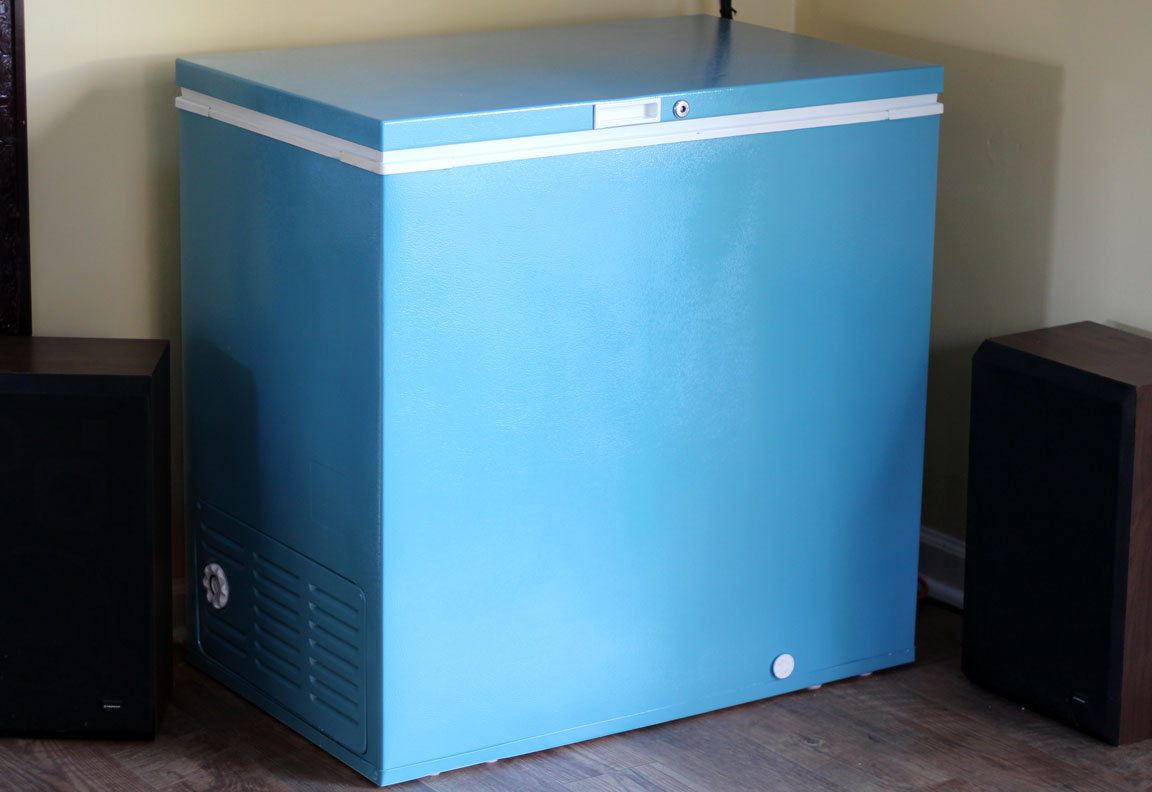
Having more time to think has allowed me to realize how distracting our possessions can be. A few weeks ago, I sold my moped which had been with me since high school. For both myself and Mrs. CK, it was a catalyst to a selling spree. I have especially been working on clearing out larger items that are taking up a lot of space. One of these items was an old second-hand chest freezer. We had used if for storing meat at one point, then it sat idle. Chest freezers are designed for optimal efficiency, so I decided to clean it up and compare it against my Energy Star kegerator. The losing appliance would be listed and sold on Craigslist.
When I first started brewing beer, we decided for some reason that we would supply 100% of our beer consumption. It was like a new year’s resolution we suddenly made up even though it was November. Not only would we brew all the beer that we were drinking, but also all the beer we would serve guests in our home. Essentially, there was a ban on purchasing commercially produced alcohol, and being a couple of weirdos, we stuck with it. We brewed 48 batches of beer over the course of a year, and quickly neared the legal limit for home-brewing.
 Who needs this many home-made beers on tap?
Who needs this many home-made beers on tap?
In my post about early retirement and the FI lifestyle, I talk about hobbies. One of the main rules I lay down for venturing into a new hobby is: don’t go crazy buying tons of superfluous crap. Well, I learned a lot about making beer in that year, but I also broke the rules and acquired too much equipment. There were a few parties where I had 5 craft beers on tap. In addition to the chest freezer, we had 2 kegerators converted to hold double taps each. While it made for some awesome parties, keeping 2 IPAs, a stout, a belgian ale, and a saison on tap is ridiculous – even if it does put a smile on my face thinking about it 🙂
Brewing that much beer was too much to maintain, and after the first year, I started slowing down. Before I quit my job at the beginning of this summer, I sold one of the kegerators. That left me with 2 options for keeping my home-brewed kegs. Up to this point, the ugly, rusted chest freezer stayed in the garage. Because of its age and condition, I would probably be lucky to get $50 selling it as-is. But before I could even consider swapping it out with the kegerator, the chest freezer was going to need some beautification. Inspired by a beach side bar in Barbados that also used a chest fridge, I decided to paint it Caribbean blue.
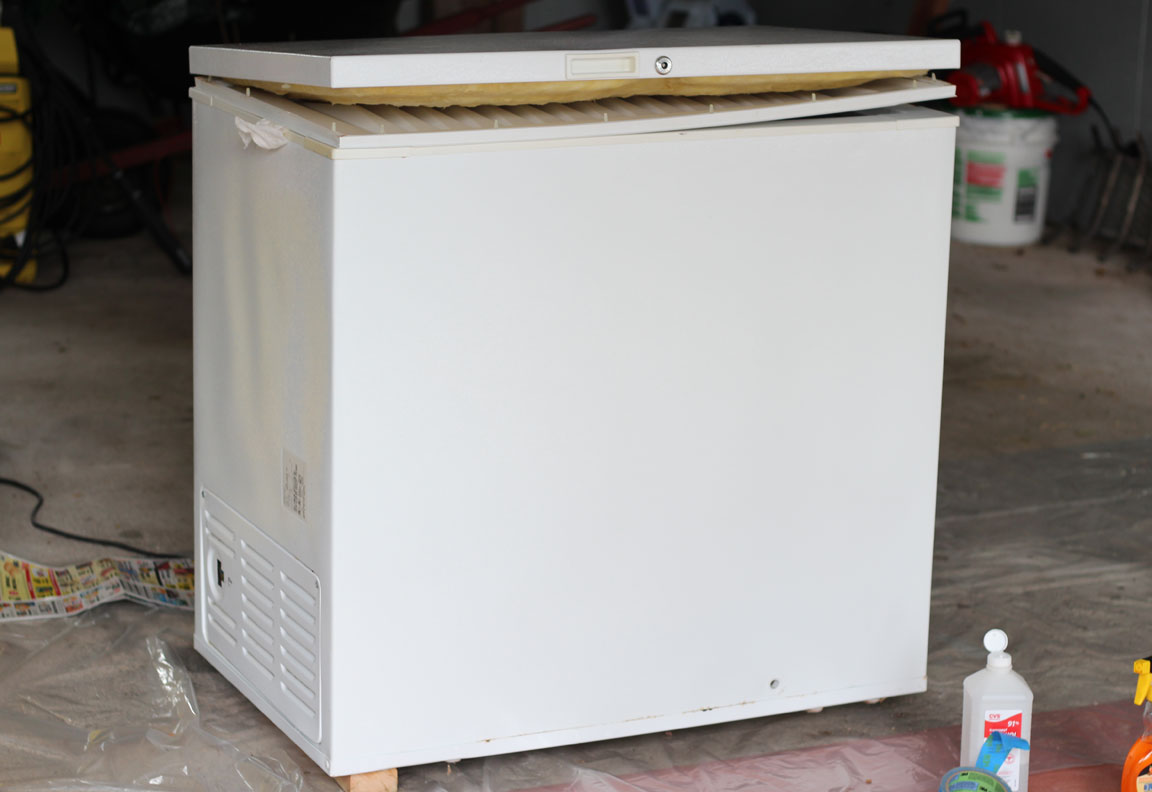 Ugly, rusted chest freezer.
Ugly, rusted chest freezer.
I stripped down the chest freezer, removed the handles and insulation on the lid, cleaned the surfaces with alcohol, and taped up the lower portion. After spraying it down with two $5 cans of spray paint, I was left with a nice glossy coat. Spray paint takes a long time to dry, but I painted it just before our trip to Nova Scotia, so it had 2 weeks to dry in the Prius’s garage spot. When we returned from our trip, I put it all back together and moved it into the house for testing.
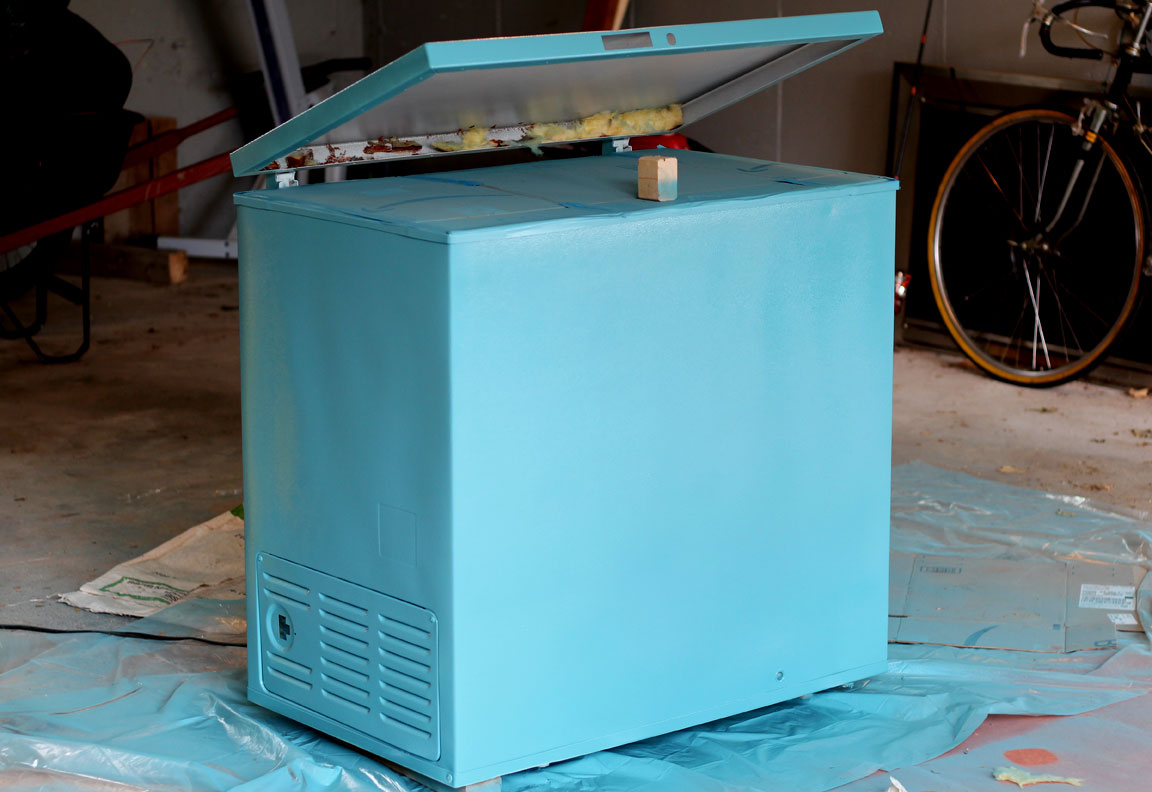 Looking more presentable.
Looking more presentable.
How to Convert a Chest Freezer to a Keezer
Obviously, the chest freezer is designed to operate at much colder temperatures than the temperature at which we keep our beer. However, there are thermostats that you can simply plug the chest freezer into, then run a small thermometer lead inside to measure the temperature. The thermostat turns the power on and off to keep the freezer at a desired temperature – it simply overrides the factory thermostat. This is the easiest way, and at the time of writing this article, a plug-in thermostat costs only $35. But if you can do some electrical wiring, a basic digital temperature controller costs even less at $15.
I went with the cheaper, and a bit cleaner, option of installing a basic controller and taking the old thermostat out of the loop. The controller came with basic wiring instructions – splice an extra wire from the power cord to power the controller, and hook up the digital controller switch to the same wires that ran from the original thermostat to the compressor. I first powered on the controller without hooking up the compressor so I could adjust all the settings. I set the controller to the cooling mode, adjusted the compressor short cycle protection to 8 min, and set the temp differential to 3 degrees – this determines how much the temperature can rise before the compressor is turned on. I then set the desired temp to 34 degrees and hooked up the compressor. It worked flawlessly.
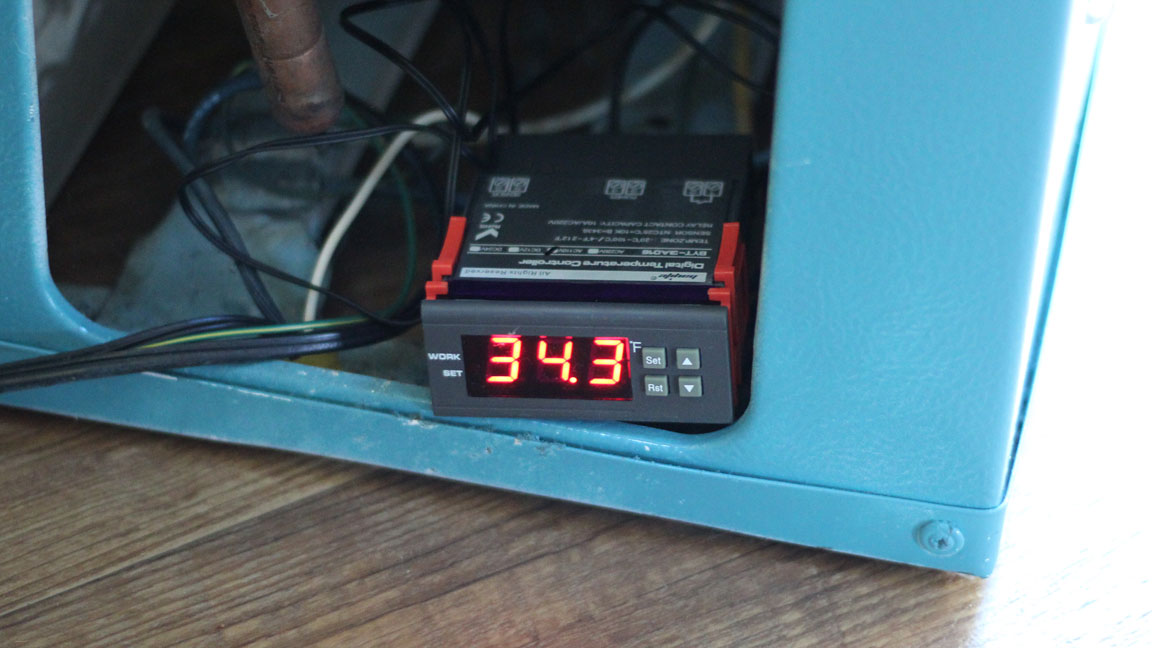 Installed digital temperature controller.
Installed digital temperature controller.
The chest fridge was now looking sharp and running perfectly. It was time to determine whether to sell the kegerator or the chest fridge. I knew the kegerator would sell for more, but it was also an Energy Star appliance. The chest fridge on the other hand is probably 20 years old – it might even be older than the Energy Star rating system. But there are some benefits in the chest fridge design. The kegerator dissipates heat from the two sides, whereas the chest fridge has no front door and dissipates heat from the two sides and the large front area. More surface area to dissipate heat should mean more efficiency. The chest fridge also has better insulation and a top door so that cold air does not pour out when it’s opened.
Energy Consumption: Kegerator vs. Keezer
While I was working on the build, I plugged the kegerator into my energy meter. To account for fluctuations between adding and removing beer, I let the meter run for a month. When the chest fridge build was ready, I swapped fridges and again ran the energy meter for a month. I did the cost analysis with CT electricity rate which is close to 25 cents per kilowatt-hour for 100% renewable energy, and the results were pretty shocking…
Energy Star Kegerator:
28.3 kWh/month * .25 cents/kWh = $7.08 /month
Old Chest Freezer Converted to Fridge:
10.2 kWh/month * .25 cents/kWh = $2.55 /month
So for $10 worth of spray paint and a $15 digital temperature controller, I was able to turn an ancient, worthless chest freezer into a fridge that is nearly three times as efficient as an Energy Star fridge. The kegerator is officially going up on Craigslist.
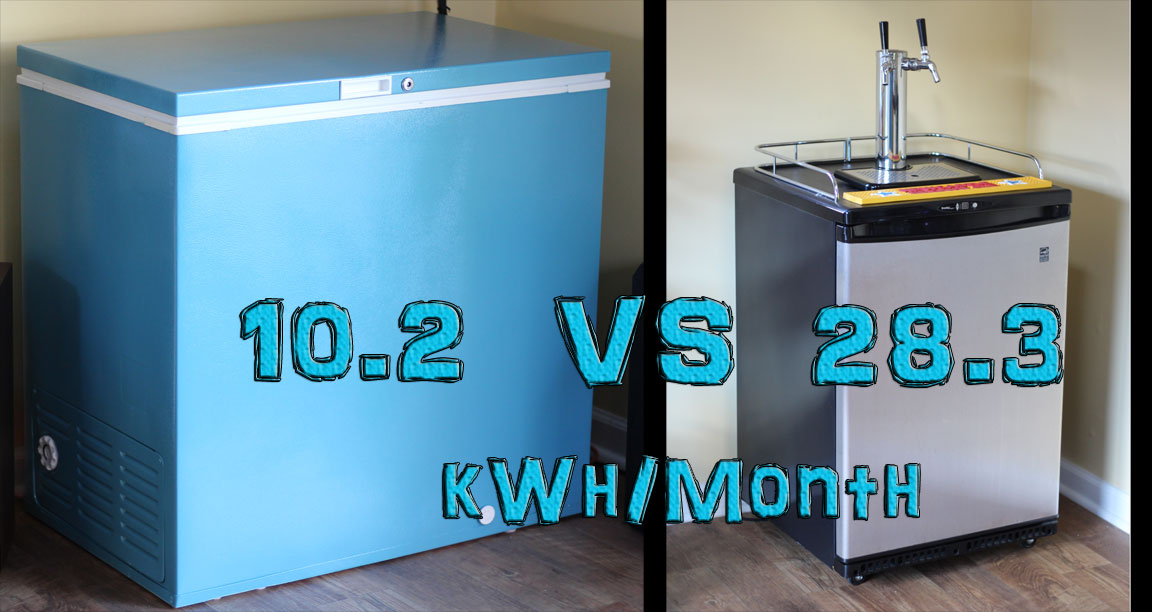
The converted chest fridge also has more capacity, and with a digital thermostat it can become a freezer again with the touch of a button. Not only is it useful for beer, but also for cold storage of our garden vegetables. In addition to 2 kegs, I also store loads of cabbages and carrots from the garden. The only drawback is that chest freezers are not built to handle condensation. After a month or so, depending on usage and humidity, a pool of water can build up inside. This is not a big deal, I just wipe it down when I replace a keg. By selling the 2 kegerators, I’ll have another ~$1000 back in my pocket, a cleared out garage, a cleared out mind, and can still indulge in my hobby while using much less energy.